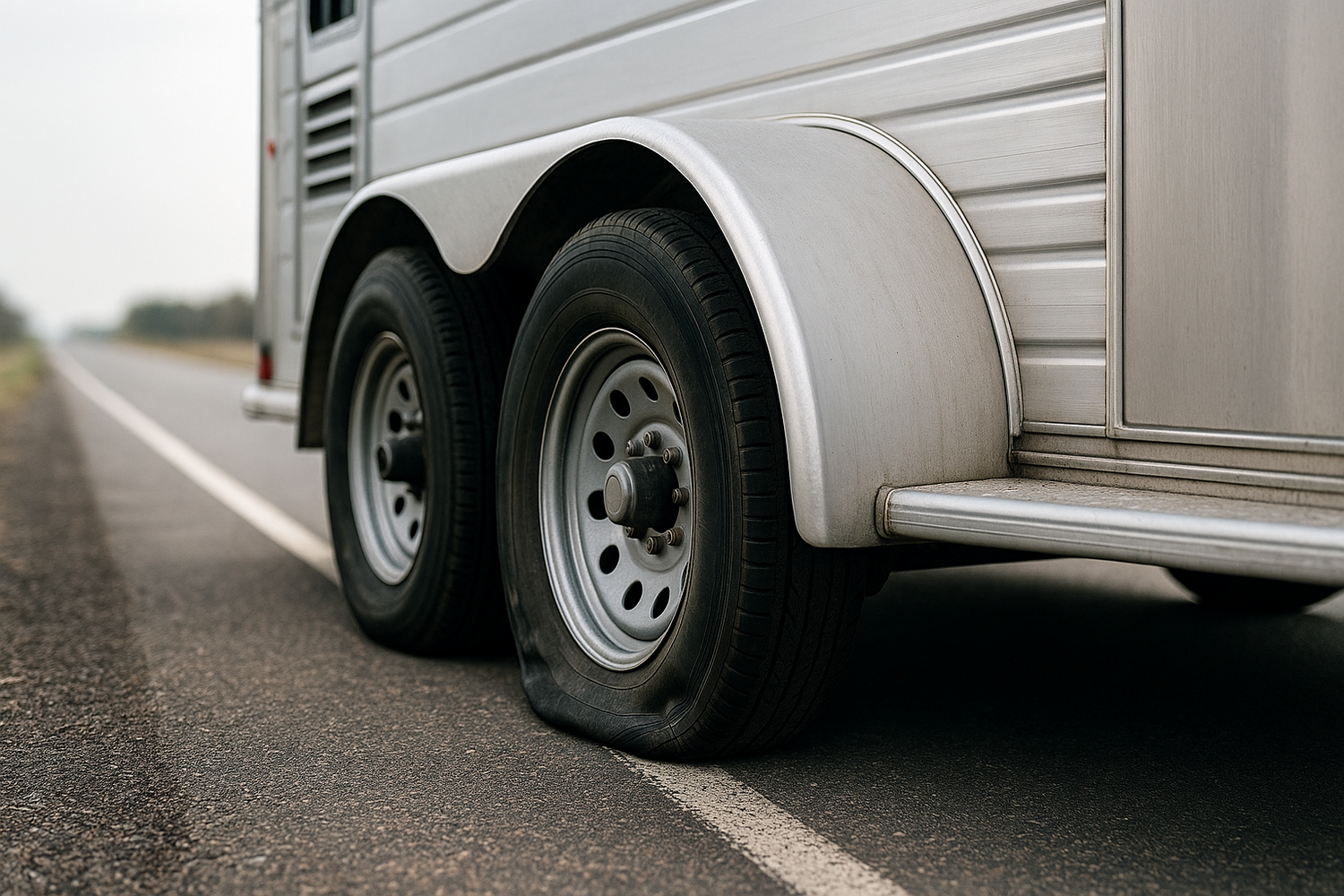Maintaining optimal tire pressure is crucial for the safe and efficient operation of any trailer. When trailer tires are not properly inflated, it can lead to a range of issues, including increased tire wear, reduced fuel efficiency, and even catastrophic tire failure. A trailer tire pressure and temperature monitoring system offers a proactive solution to these challenges.
One of the primary benefits of using a monitoring system is that it provides real-time data on tire pressure and temperature. This information allows trailer operators to:
- Identify potential problems early: By monitoring tire conditions, you can detect issues before they escalate into dangerous situations.
- Enhance safety: Proper tire maintenance reduces the risk of blowouts and accidents, ensuring a safer towing experience.
- Improve fuel efficiency: Correct tire pressure can lead to better fuel consumption, saving you money on fuel costs.
Moreover, a smart trailer equipped with a tire monitoring system can provide alerts directly to your smartphone or dashboard, allowing for instant responses to any irregularities. This technological advantage not only enhances the safety of your trailer but also gives you peace of mind while on the road.
Tow with peace of mind, knowing that trailerwatchdog is standing guard.
How Temperature Affects Trailer Tire Performance
The performance of trailer tires is heavily influenced by temperature, making it essential for owners to understand this relationship. Tires operate optimally within a specific temperature range; deviations can lead to significant issues that compromise both safety and efficiency.
When tire temperatures rise, several adverse effects can occur:
- Increased Wear and Tear: High temperatures accelerate the degradation of rubber, leading to premature wear and potential blowouts.
- Loss of Pressure: As temperature increases, air expands, which can cause tires to lose pressure. This loss can further exacerbate wear and reduce traction.
- Reduced Handling Capability: Overheated tires can lose their grip on the road, making it difficult to control the trailer, especially during turns or emergency maneuvers.
Conversely, low temperatures can also negatively affect tire performance:
- Decreased Flexibility: Cold weather can make rubber stiffer, resulting in reduced contact with the road surface.
- Increased Rolling Resistance: Stiffer tires can lead to higher rolling resistance, which impacts fuel efficiency and overall performance.
Monitoring tire temperature, alongside pressure, ensures that you can take corrective measures before any serious issues arise. By utilizing a trailer tire pressure and temperature monitoring system, you can keep a close eye on these critical metrics and maintain optimal tire performance throughout your travels.
Key Features of a Monitoring System

Investing in a trailer tire pressure and temperature monitoring system can greatly enhance the safety and efficiency of your trailer. These systems come equipped with a variety of features designed to provide real-time data and alerts, ensuring that you are always informed about the condition of your tires. Here are some key features to look for:
- Real-Time Monitoring: The best systems offer constant updates on tire pressure and temperature, allowing you to make immediate adjustments if necessary.
- Automatic Alerts: Many monitoring systems come with built-in alarms that notify you of critical changes, such as rapid pressure loss or excessive temperature, enabling proactive action before failure occurs.
- Data Logging: Advanced systems track historical data, providing insights into tire performance over time. This information can help identify recurring issues and optimize maintenance schedules.
- Easy Installation: A user-friendly design ensures that these systems can be easily installed on any trailer without requiring extensive modifications.
- Wireless Connectivity: Many modern systems utilize Bluetooth or Wi-Fi technology to communicate with your smartphone or vehicle's display, giving you seamless access to tire data.
By incorporating these features, a monitoring system not only enhances safety but also contributes to overall trailer performance and longevity. Keeping a vigilant eye on tire conditions can make all the difference in ensuring a smooth and safe towing experience.
Installation Process for Tire Monitoring Devices

Installing a trailer tire pressure and temperature monitoring system is a straightforward process that can typically be completed in just a few steps. Proper installation is crucial for ensuring accurate readings and optimal performance. Here’s a guide to help you through the installation process:
- Gather Your Tools: Before you begin, make sure you have all necessary tools at hand, such as a wrench, screwdrivers, and any specific installation hardware that comes with your monitoring system.
- Read the Manual: Familiarize yourself with the manufacturer's instructions. Each system may have slight variations in the installation process, and understanding these specifics is essential.
- Install the Sensors: Begin by installing the tire sensors on each tire valve stem. Ensure that they are securely tightened, but avoid overtightening, which can damage the valve.
- Mount the Display Unit: Find an appropriate location for the display unit inside your vehicle or on your dashboard. This unit should be easily visible while driving, allowing you to monitor tire conditions at a glance.
- Connect the Power Source: Most systems require a power source. Whether it’s a battery-operated unit or one that connects to your vehicle’s power supply, ensure that it is properly connected and secured.
- Sync the Devices: Follow the instructions to sync the sensors with the display unit. This may involve pairing via Bluetooth or following a specific setup process to ensure that the data is transmitted correctly.
- Perform a Test: Once everything is installed, conduct a test drive to confirm that the system is functioning properly. Check for accurate readings and ensure that the alerts are operational.
By following these steps, you can successfully install your tire monitoring system, giving you peace of mind and enhancing the safety of your trailer on the road.
Best Practices for Regular Maintenance

Maintaining your trailer tire pressure and temperature monitoring system is essential for ensuring longevity and reliability. Regular maintenance not only enhances the performance of the system but also contributes to overall safety on the road. Here are some best practices to consider:
- Regularly Check Sensors: Inspect the tire sensors at least once a month to ensure they are clean and free from debris. Dirt and grime can interfere with their functionality and lead to inaccurate readings.
- Monitor Battery Life: If your system is battery-operated, check the battery level regularly and replace it as needed. A low battery can lead to lost signals and unreliable data.
- Calibrate the System: Periodically calibrate the monitoring system according to the manufacturer’s guidelines. This ensures that the readings remain accurate over time.
- Update Software: If your system features any software updates, make sure to install them promptly. These updates can enhance functionality and fix any bugs that may have been identified.
- Inspect Tire Condition: Regularly inspect the tires themselves for signs of wear and tear, such as uneven tread, cracks, or bulges. A well-maintained tire will ensure that the monitoring system provides the most reliable data.
- Test the Alerts: Frequently test the alert system to ensure that it is functioning properly. This includes checking both visual and audible alerts for tire pressure and temperature deviations.
- Document Maintenance Activities: Keep a log of all maintenance activities performed on your monitoring system. This can help you track performance over time and identify patterns that may need attention.
By following these best practices for regular maintenance, you can maximize the effectiveness of your tire monitoring system and ensure a safer towing experience.
Choosing the Right Monitoring System for Your Trailer

Selecting the ideal trailer tire pressure and temperature monitoring system is crucial for ensuring the safety and reliability of your trailer. With various options available on the market, making an informed choice can be overwhelming. Here are some key factors to consider when choosing a monitoring system:
- Compatibility: Ensure that the system you select is compatible with your trailer type and size. Some systems are designed specifically for certain trailers, while others can adapt to various models.
- Real-Time Monitoring: Look for systems that offer real-time data transmission. This feature allows you to receive immediate alerts about tire pressure and temperature changes, enabling you to take swift action if a problem arises.
- Durability: The monitoring system should be built to withstand harsh environments. Choose systems with robust construction and weatherproof features to ensure longevity.
- Ease of Installation: Opt for systems that are easy to install, preferably those that come with clear instructions and do not require extensive modifications to your trailer.
- Alerts and Notifications: Choose a system that offers customizable alerts, whether through a mobile app or directly on a display screen. This feature ensures you are promptly informed of any issues.
- Customer Support: Look for manufacturers that provide strong customer support. This is essential for troubleshooting and resolving any issues that may arise with your monitoring system.
By considering these factors, you can select a monitoring system that meets your specific needs and enhances your trailer's safety. Tow with peace of mind, knowing that TrailerWatchdog is standing guard. For more information on our advanced trailer monitoring solutions, visit trailerwatchdog.com.








